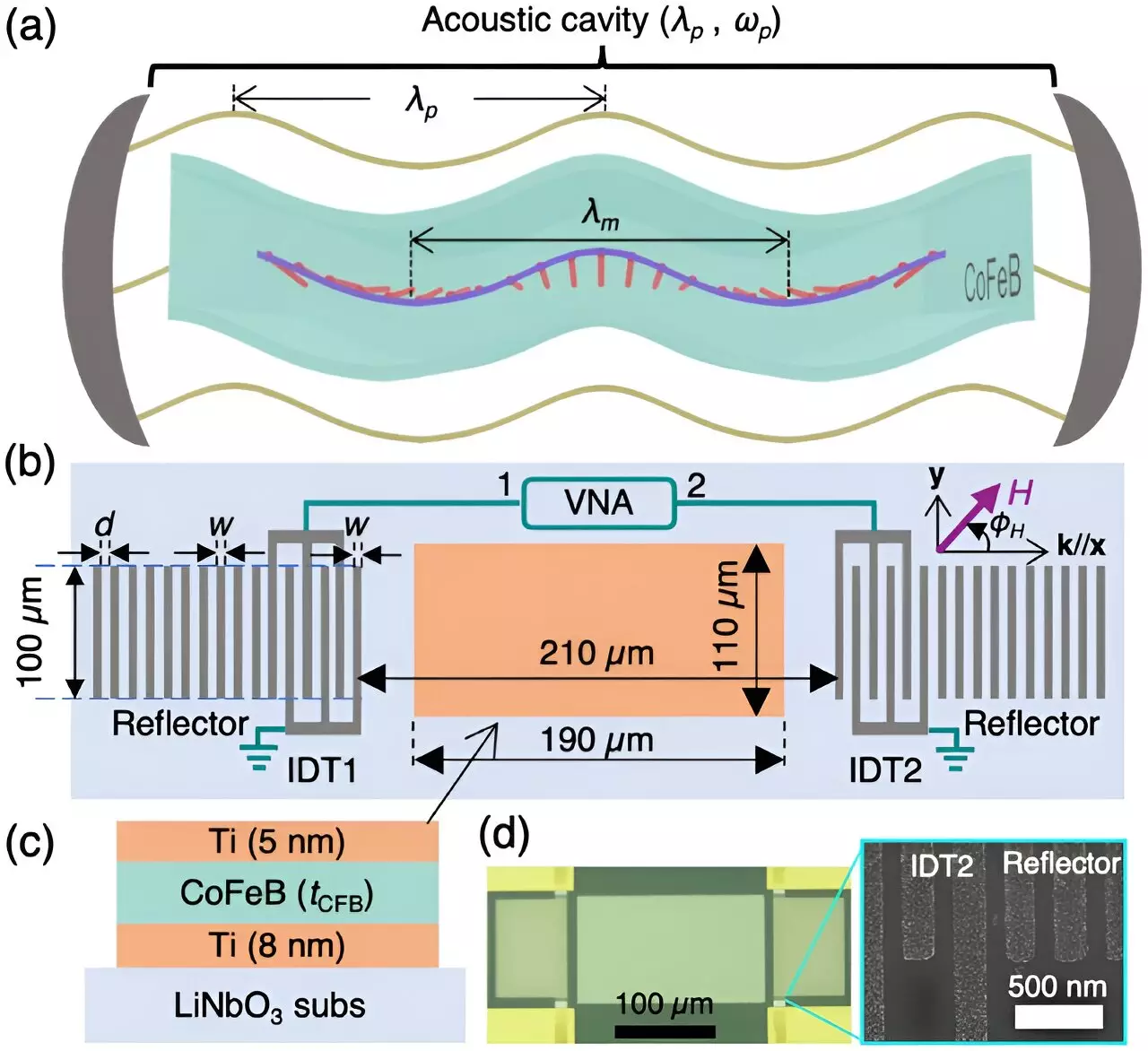Innovations in the field of technology are constantly on the rise, as researchers strive to find new ways to improve the efficiency and functionality of devices. A recent study conducted by a team of researchers from the RIKEN Center for Emergent Matter Science in Japan has made significant progress in creating a strong coupling between two different forms of waves – magnons and phonons. This breakthrough, achieved at room temperature, holds great potential for the development of hybrid wave-based devices that could revolutionize information processing methods.
Traditional computing devices rely on the movement of electric charge, specifically electrons. However, the limitations of electron movement, such as speed and energy loss due to heat generation, have led scientists to explore alternative forms of energy transfer. Wave-like forms of energy, such as sound, light, and spin, hold promise for the development of more efficient and environmentally friendly devices. By harnessing the unique properties of magnons and phonons, researchers aim to create devices that operate with minimal energy loss.
The team of researchers focused on magnons, which are quasiparticles representing the collective excitation of spins, and phonons, which are acoustic phenomena. By studying these two wave-like forms of energy, the researchers were able to achieve a strong coupling between magnons and phonons in a thin film. This breakthrough was made possible by utilizing shear sound waves, which are better suited for interacting with magnets. The researchers developed a nano-structured surface acoustic wave resonator, which confined ultrasound waves to a specific area and enhanced the coupling between surface sound waves and magnets.
The successful coupling of magnons and phonons in the thin film opens up new possibilities for information processing technologies. By creating a novel hybrid state where these two wave-like forms of energy work together, the researchers believe that significant advancements can be made in the field of information and communication technologies. This breakthrough could pave the way for the development of hybrid wave-based devices that operate with minimal losses, leading to more efficient and sustainable technology solutions.
As the researchers continue to explore the potential applications of magnon-phonon quasiparticles, they hope to contribute to the development of advanced wave-based information processing devices. By leveraging the unique properties of magnons and phonons, researchers can create devices that enable faster information transfer and storage methods. The successful demonstration of strong magnet-sound coupling in the Co20Fe60B20 film represents a significant step towards the realization of hybrid wave-based technologies with exciting prospects for the future.


Leave a Reply